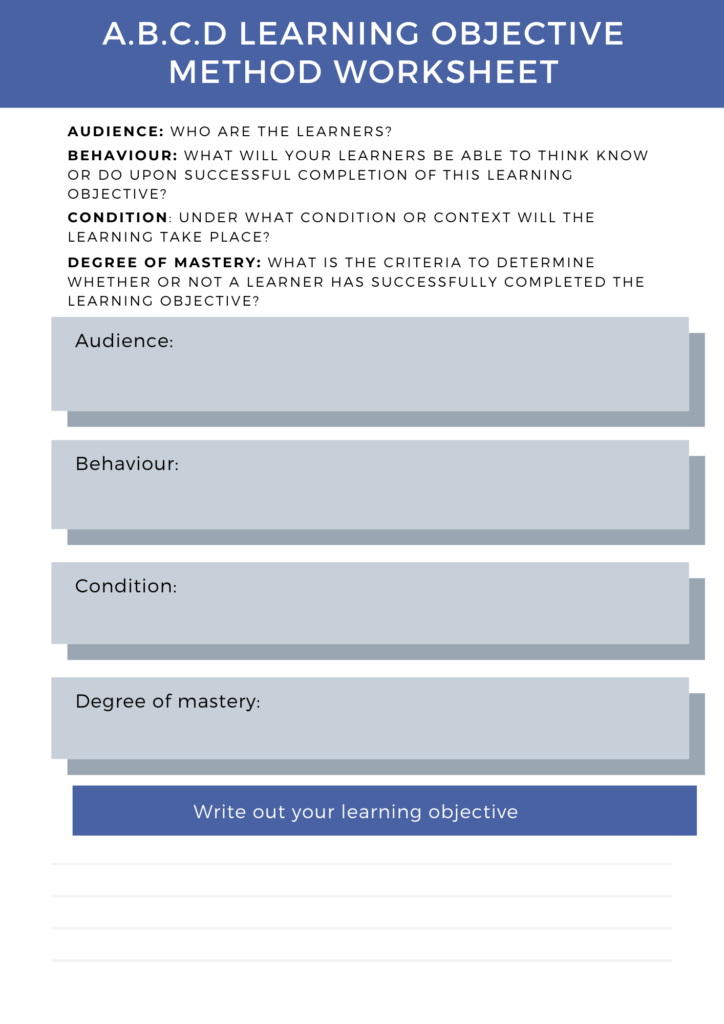5 Learning objectives must be clear
Learning objectives are the waypoints on the map of the student’s personalized learning journey. While students may take different paths to arrive at each one of these waypoints, it is essential that they all arrive there.

Learning objectives should:
- Learning objectives need to state clear expectations of what the student is to understand.
- Learning objectives describe performances that are significant, essential and observable.
- Ideally, there should be one performance per objective.
Learning objectives should not:
- Learning objectives do not dictate the curriculum. When thinking through the desired learning objectives one must consider what different paths could bring the students to the same objectives
- Learning objectives should avoid being vague and unclear.
Bad learning objective: The student will have an overall understanding of programming HTML.
Good learning objective: The student will be able to program a basic website in HTML by the end of the semester.
There are essentially three domains that all learning objectives fall under:
Affective: These types of learning objectives focus on the mindset of learners or how they think. These are often the most difficult types of learning objectives to write as they deal with learner’s emotions and attitudes. It is often difficult to measure or see evidence of learning in these areas
Skillset: This area focuses on teaching or improving the learner’s skill sets in certain areas.
Knowledge: This domain focuses on what the learner knows and understands. These learning objectives aim to increase learner’s understanding of certain topics.
Once you have identified which domain your learning objective will fall under it is time to decide what you want your learners to be able to do after completing this learning objective. This is best identified using an action verb.
Each domain will have its own action verbs below are some examples:
Affective: Accept, argue, acknowledge, advocate, challenge, facilitate, forgive, influence, manage, oversee, promote, recommend.
Skillset: Align, arrange, assemble, construct, dismantle integrate, measure, perform prepare, troubleshoot, repair.
Knowledge: Apply, analyze, assess, categorize, contrast, critique, describe, examine, recommend, specify, synthesize.
Now that you have identified which domain of learning your objectives fall under and have chosen what you want your learners to do at the end of a task it is time to write some learning objectives. This can be done using what is commonly called the A.B.C.D learning objective method.
Audience: Who are your learners?
Behaviour: What will your learners be able to think, know or do upon successful completion of this learning objective?
Condition: Under what condition or context will the learning take place?
Degree of mastery: What are the criteria to determine whether or not a learner has successfully completed the learning objective?
Here is an example of an objective-based off of this framework:
As a result of reading this manual on design principles for adaptive learning (Condition), Instructors (Audience) will categorize (Behavior) their content into the three levels of mastery (Degree of mastery) necessary to allow for its use in the adaptive learning platform.
Use this worksheet to determine your learning objectives:


